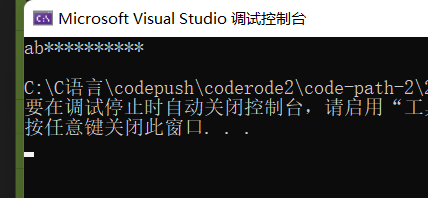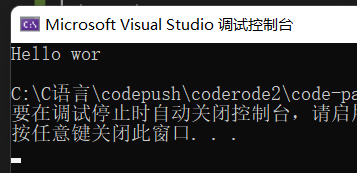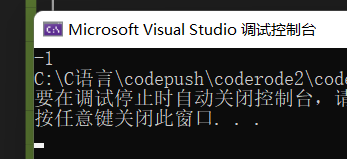C语言进阶(九) - 字符与字符串函数 - 3 - strncpy()、strncat()函数、strncmp函数
C语言进阶(九) - 字符与字符串函数 - 3 - strncpy()、strncat()函数、strncmp函数

怠惰的未禾
发布于 2023-04-27 21:14:29
发布于 2023-04-27 21:14:29
代码可运行
运行总次数:0
代码可运行
前言
strcpy()函数、strcat()函数、strcmp()函数是长度不受限制的字符串函数,存在危险。strncpy()函数、strncat()函数、strncmp()函数多了一个参数n,限制了对字符串的访问,相对来说安全一些。
1. strncpy()函数
1.1 strncpy()函数的声明

点击转到cpluscplus.com官网 - strncpy
所需头文件为<string.h>
- 拷贝
num个字符从源字符串到目标空间。 - 如果源字符串的长度小于
num,在拷贝完源字符串之后,在目标的后面追加0,直到num个。 - 如果
source的长度大于num,则不会在destination的末尾隐式添加空字符。因此,在这种情况下,destination不应被视为一个以空结尾的C字符串(这样读取它会溢出)。
1.2 模拟实现strncpy()函数
//模拟实现strncpy
#include <stdio.h>
#include <assert.h>
char* my_strncpy(char* destination, const char* source, size_t num) {
//断言,指针destination与指针source接受的均不是NULL
assert(destination && source);
//记录目标空间地址
char* start = destination;
while (num-- && (*destination++ = *source++)) {
;
}
num++;
destination--;
while (num--) {
*destination++ = '\0';
}
return start;
}
int main() {
char str1[] = "ab";
char str2[20] = "************";
char* p = my_strncpy(str2, str1, 2);
puts(p);
return 0;
}运行结果:

vs2019给出的实现:
char * __cdecl strncpy (
char * dest,
const char * source,
size_t count
)
{
char *start = dest;
while (count && (*dest++ = *source++)) /* copy string */
count--;
if (count) /* pad out with zeroes */
while (--count)
*dest++ = '\0';
return(start);
}2. strncat()函数
2.1 strncat()函数的声明

点击转到cpluscplus.com官网 - strncat
所需头文件为<string.h>
- 将源字符串中的前
num个元素追加到目标空间的后面。 - 如果源字符串的长度小于
num,则只追加源字符串本身,到达源字符串的末尾后不在目标空间补充'\0'。 - 如果源字符串长度大于
num,再追加完源字符串的num个元素后,会为目标空间补上'\0'。
2.2 模拟实现strncat()函数
#include <stdio.h>
#include <assert.h>
char* my_strncat(char* destination, const char* source, size_t num) {
//断言
assert(destination && source);
//
char* start = destination;
//
while (*destination) {
destination++;
}
//
while (num && (*destination++ = *source++)) {
num--;
}
if (!num) {
*destination = '\0';
}
return start;
}
int main() {
char str1[] = "word!";
char str2[20] = "Hello \0**********";
my_strncat(str2, str1, 9);
return 0;
}运行结果:

vs2019给出的实现:
char * __cdecl strncat (
char * front,
const char * back,
size_t count
)
{
char *start = front;
while (*front++)
;
front--;
while (count--)
if (!(*front++ = *back++))
return(start);
*front = '\0';
return(start);
}3. strncmp()函数
3.1 strcmp()函数的声明

点击转到cpluscplus.com官网 - strncmp
所需头文件为<string.h>
- 比较两个字符串中最多
num个字符。 - 开始比较每个字符串的第一个字符,如果相等就比较下一对,直到字符不相同或者一个字符串结束或者
num个字符比较完。
Return Value
Returns an integral value indicating the relationship between the strings:
return value | indicates |
|---|---|
<0 | **the first character that does not match has a lower value in str1 than in **str2 |
0 | the contents of both strings are equal |
>0 | **the first character that does not match has a greater value in str1 than in **str2 |
3.2 模拟实现strncmp()函数
#include <stdio.h>
#include <assert.h>
#include <string.h>
int my_strncmp(const char* str1, const char* str2, size_t num) {
//断言
assert(str1 && str2);
while (*str1 == *str2 && num) {
if (*str1 == '\0') {
return 0;
}
str1++;
str2++;
num--;
}
if (num) {
return *str1 - *str2;
}
else {
return 0;
}
}
int main() {
char str1[] = "abcdef";
char str2[] = "aca";
int ret = my_strncmp(str1, str2, 3);
return 0;
}运行结果:

vs2019给出的实现:
int __cdecl strncmp
(
const char *first,
const char *last,
size_t count
)
{
size_t x = 0;
if (!count)
{
return 0;
}
/*
* This explicit guard needed to deal correctly with boundary
* cases: strings shorter than 4 bytes and strings longer than
* UINT_MAX-4 bytes .
*/
if( count >= 4 )
{
/* unroll by four */
for (; x < count-4; x+=4)
{
first+=4;
last +=4;
if (*(first-4) == 0 || *(first-4) != *(last-4))
{
return(*(unsigned char *)(first-4) - *(unsigned char *)(last-4));
}
if (*(first-3) == 0 || *(first-3) != *(last-3))
{
return(*(unsigned char *)(first-3) - *(unsigned char *)(last-3));
}
if (*(first-2) == 0 || *(first-2) != *(last-2))
{
return(*(unsigned char *)(first-2) - *(unsigned char *)(last-2));
}
if (*(first-1) == 0 || *(first-1) != *(last-1))
{
return(*(unsigned char *)(first-1) - *(unsigned char *)(last-1));
}
}
}
/* residual loop */
for (; x < count; x++)
{
if (*first == 0 || *first != *last)
{
return(*(unsigned char *)first - *(unsigned char *)last);
}
first+=1;
last+=1;
}
return 0;
}END
本文参与 腾讯云自媒体同步曝光计划,分享自作者个人站点/博客。
原始发表:2022-07-09,如有侵权请联系 cloudcommunity@tencent.com 删除
评论
登录后参与评论
推荐阅读
目录
